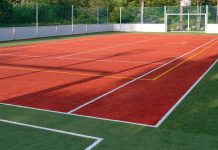Cast press molding machines are vital in foundries, where they change liquid metal into exact shapes vital for different businesses. The measure and capacity of these machines direct their operational productivity, adaptability in taking care of distinctive molds, support necessities, and by and large generation capabilities. Understanding these components is fundamental for optimizing execution and guaranteeing consistent foundry operations. By tending to these angles comprehensively, producers can upgrade efficiency, keep up tall item quality benchmarks, and viably meet the differing requests of advanced fabricating situations.
The Effect of Estimate and Capacity on Cast Press Molding Machine Execution
This outline investigates how the measurements and preparation capabilities of cast iron molding machine impact effectiveness, adaptability, upkeep needs, generation rates, and innovative progressions in foundry operations.
Understanding Cast Press Molding Machines
Cast press molding machines are fundamental in foundries, changing liquid metal into strong shapes through form infusion. They come in changed sizes and capacities, significant for assembly assorted generation requests over businesses such as cars, aviation, and development. The machines’ flexibility permits exactness in making components of distinctive scales and complexities, guaranteeing they play a crucial part in fabricating forms requiring solid and productive metal casting capabilities.
Estimate: Measurements and Workspace Prerequisites
The physical measurements of a molding machine are basic components in foundry operations. Bigger machines request significant floor space and overhead clearance, impacting the general format and operational stream of the office. This may affect productivity and coordination arranging altogether. In differentiation, compact machines give more adaptability in arrangement inside a foundry but may limit the estimate of molds and the greatest generation volumes achievable, requiring cautious thought of space utilization and generation objectives.
Capacity: Taking care of Liquid Metal and Generation Rates
Capacity in molding machines signifies the volume of liquid metal prepared per unit of time. Machines with tall capacity exceed expectations in a fast generation, effectively assembling fluctuating requests and maximizing yield rates. Alternately, machines with lower capacity can be invaluable for dealing with complicated form plans or specialized amalgams requiring fastidious consideration of detail. This adaptability permits foundries to optimize generation methodologies based on the particular necessities of their items and operational imperatives.
Execution Effectiveness: Throughput and Cycle Times
Effective molding machines are planned to maximize throughput by minimizing the time between form infusions, known as cycle times. Bigger machines regularly accomplish speedier cycle times, encouraging expanded everyday yield and assembly generation quantities successfully. In differentiation, smaller machines sparkle in applications where accuracy is foremost, such as in prototyping or specialized fabricating forms. Here, the accentuation shifts from sheer speed to guaranteeing each form infusion conveys immaculate quality and meets demanding determinations, upgrading in general item astuteness.
Adaptability: Adjusting to Different Generation Needs
Adaptability in molding machines envelops their capacity to oblige a wide extent of form sizes, shapes, and fabric details. Bigger machines illustrate flexibility by effectively dealing with different molds, which bolsters the clump generation of changed components over distinctive businesses. On the other hand, smaller machines are frequently custom-fitted for specialized applications where custom molds or complex geometries are basic. This specialization permits exact fabricating forms custom-fitted to interesting item prerequisites, guaranteeing ideal execution in particular specialty markets inside the fabricating segment.
Upkeep Contemplations: Solidness and Serviceability
The measure of a molding machine altogether impacts its upkeep needs and related costs. Bigger machines, with their more prominent operational stresses and complex components, ordinarily require more visit support to maintain crest execution and unwavering quality. In differentiation, smaller machines regularly highlight less complex plans, leading to diminished downtime and lower upkeep costs. This straightforwardness not as it were improves unwavering quality over expanded operational periods but also streamlines support assignments, guaranteeing steady generation yield without compromising on quality or proficiency.
Fetched Suggestions: Venture and Operational Costs
The venture required for a casting machine is closely tied to its measure and capacity. Bigger machines for the most part involve higher starting costs due to their capability to handle large-scale generation, profiting from economies of scale. In differentiation, smaller machines are more reasonable and forthright but may result in higher per-unit costs, especially in specialized fabricating or low-volume generation scenarios. This fetched thought underscores the significance of adjusting machine estimate and capacity with particular generation needs and monetary goals inside the foundry industry.
Mechanical Headways and Future Patterns
Headways in casting innovation ceaselessly reshape molding machine plans and execution. Computerization advancements streamline operations, whereas upgraded fabric dealing with frameworks optimizes productivity and minimizes squandering. Advanced control frameworks empower precise monitoring and control, improving item quality. Looking ahead, future patterns may prioritize supportability through diminished vitality utilization and squander, nearby integration with Industry 4.0 advances like IoT and AI. These progressions guarantee to assist in upgrading efficiency, quality affirmation, and natural stewardship within the foundry industry.
Conclusion
In conclusion, the measure and capacity of cast press molding machines significantly affect their execution over basic operational measurements. Components such as throughput, effectiveness, upkeep necessities, and cost-effectiveness are straightforwardly affected by these parameters, forming their appropriateness in different foundry applications. As innovative progressions advance, optimizing these variables gets to be significant for driving advancement in casting forms. This progressing optimization not as it were improves competitiveness but moreover advances supportability by moving forward asset proficiency and minimizing natural effects inside the energetic scene of the fabricating segment.












